Carnaval in Pedasi
Celebrating Carnaval in rural Panama
The last few days of our month-long stay in Pedasi, a small town on the southern tip of the Azuero Peninsula in rural Panama, coincided with its annual Carnaval. Carnival celebrations occur across the world in the days prior to the Christian solemn season of Lent. The nature of the celebrations vary. We’d never experienced carnival in any location and as we watched the preparations in the days leading up to Carnaval, we wondered what the four-day party in this normally laid-back town would bring. We discovered there were many parts to Carnaval.
Street Party
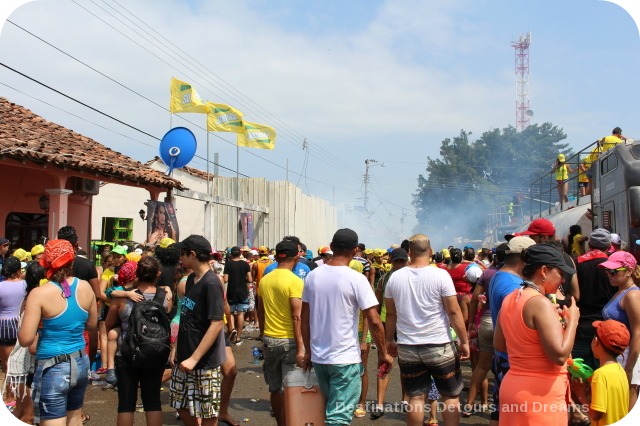
The town square was the centre of much of the activity. Crowds gathered in the afternoon, dwindled in late afternoon to early evening, and started to amass again around nine in the evening. Many brought coolers of refreshments with them. Some carried lawn chairs to watch the parade sitting down. The party lasted until the wee hours, 4:30 or so in the morning, although we didn’t last that long to witness it. We did watch fireworks from our back patio late one evening. On the last day, my husband watched the final fireworks at 6:30 am on Ash Wednesday.
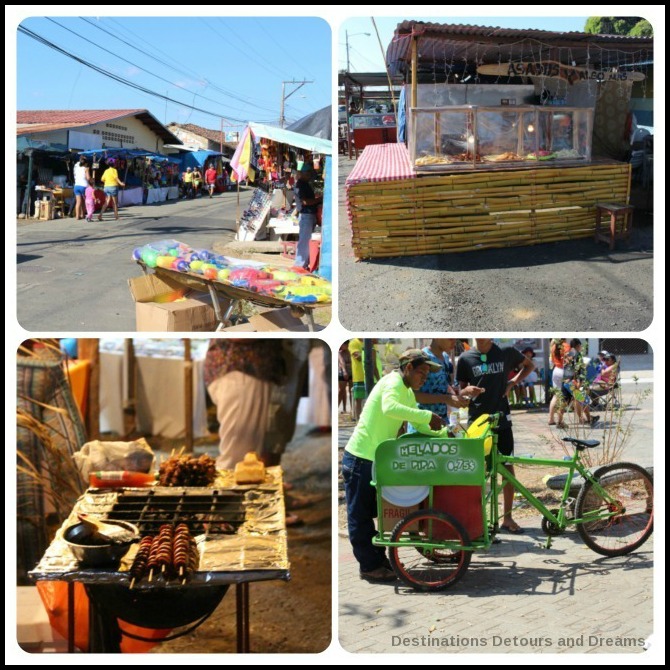
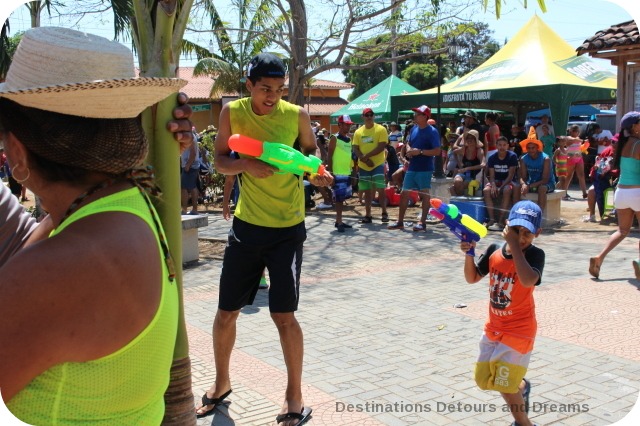
If you were in the square area, you were guaranteed to get a little wet.
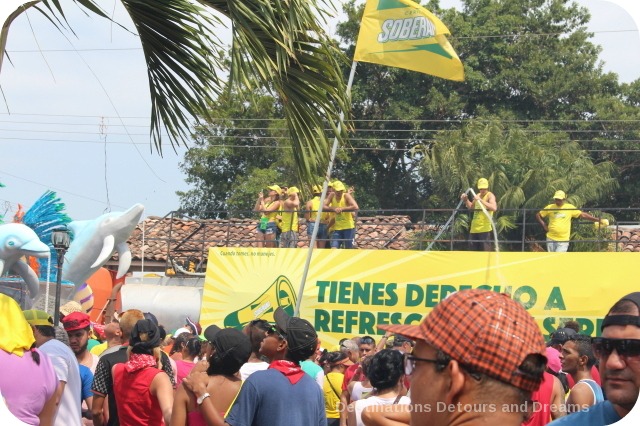
(Culecos hours were limited this year due to drought conditions.)
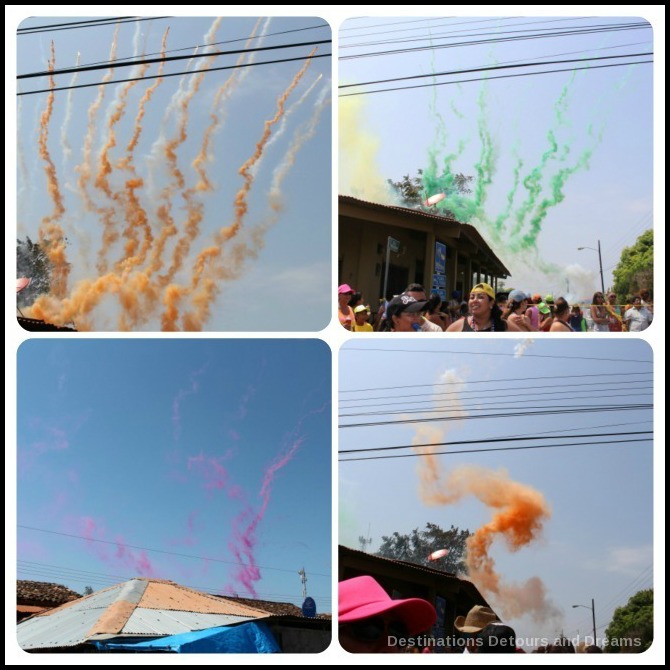
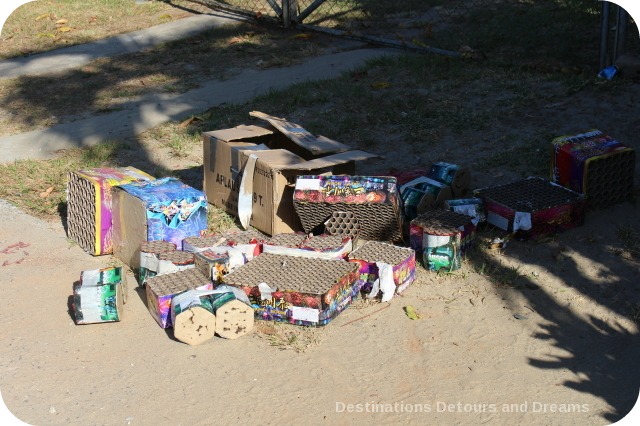
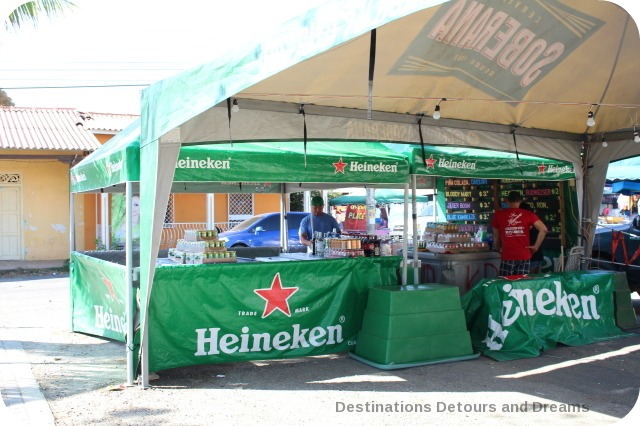
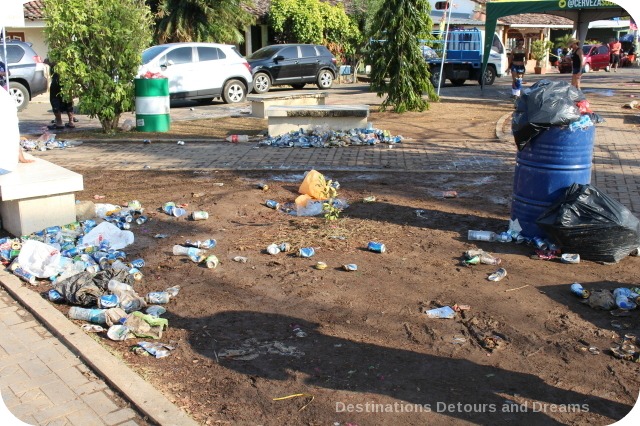
Parades
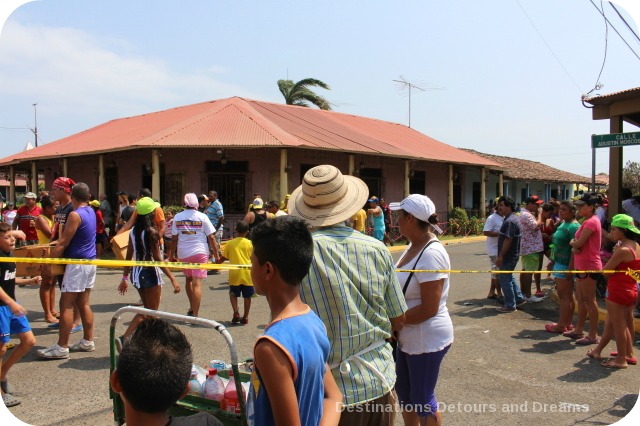
Two parades occurred each day. The first one was early in the afternoon (around 1:00 pm although we never did figure out the exact timing) and the second one at midnight. The parades focused on the rivalry between two queens from different parts of town.
Calle Arriba (uptown) and Calle Abajo (downtown) compete against each other. Floats containing the queens of each area approached the centre of town from opposite ends of the main streets and then turned onto the streets leading to the town square. Each queen was accompanied by her “tuna”, a group of supporters which included a band in a truck following her float and people walking, dancing, and singing behind that. In the evening parade, an additional float joined the parade, a float of ladies or princesses preceding the float of the queen. The queens and other ladies swayed to the music and waved. In most cases, young men stood as hidden as possible behind the ladies, either holding them steady depending on how they were perched or keeping the wide plumes of their costumes outstretched. We were told that part of the tradition included the two groups yelling out derogatory remarks about the opposing queen. We never noticed that, but that may be because of our lack of Spanish. The floats paraded at least twice around the square, stopping in spots here and there.
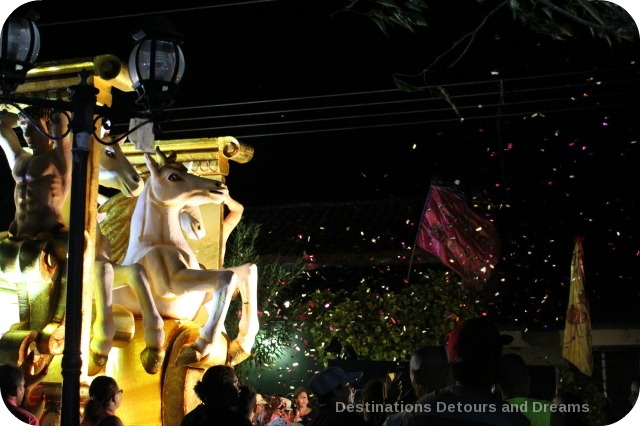
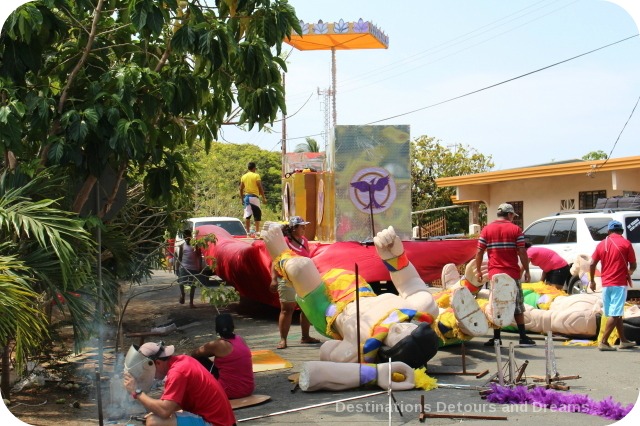
Almost as soon as one parade finished, work began preparing the float for the next one.
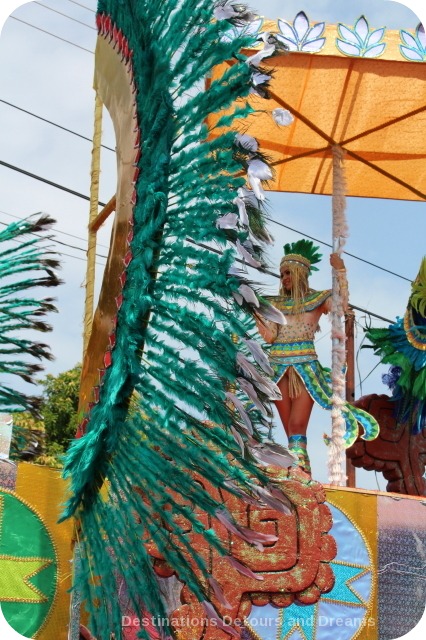
Music
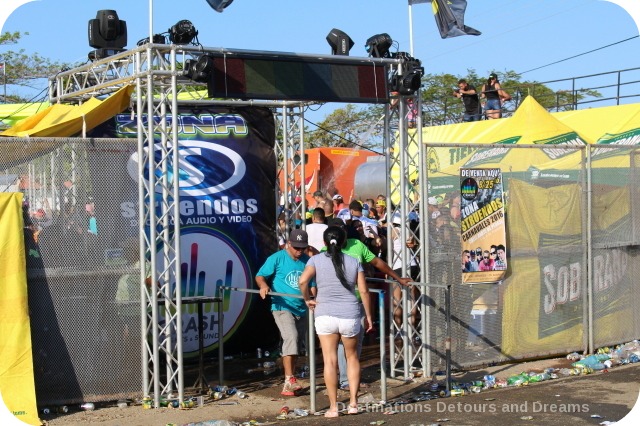
There was music everywhere. Bands accompanying the parades. Taped music in and around the square. Music blasting from homes. We saw a couple of cars with elaborate speaker systems set up in their trunks, playing music on streets in front of their or friends’ houses. Latin music except for the techno stuff from the cabarets. Two cabaret areas were set, which attracted mostly young people.
As we sat on our front porch in the afternoon, we’d hear music from the neighbours and from the cabaret the street over. We went to the square early the first evening (around 8:00 pm). On our way there, we saw grandmothers dancing with teen-aged grandsons on their front patios. Around 9:00 pm a folk band in a truck began circling the square as it played. Two other groups of people marched around the square singing to the accompaniment of people on drums. The band and singers continued circling the square and performing for almost two hours.
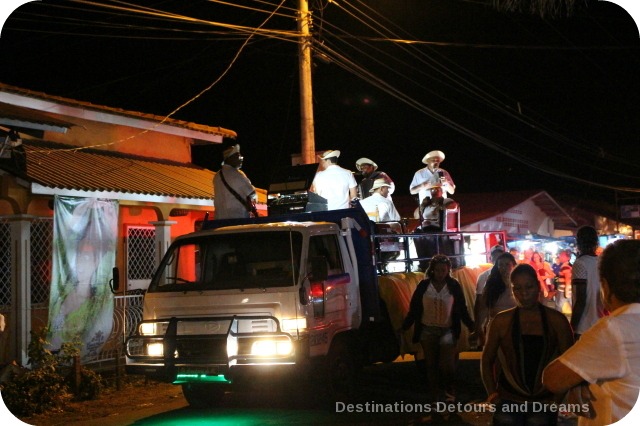
Family and Friends
In the couple of days leading up to Carnaval, people began arriving in Pedasi. People continued to arrive the morning of the first day. Extended family arrived at our neighbours’ houses to stay through Carnaval. The neighbours on one side made use of the empty space between us and their house. Four or five cars were parked there throughout Carnaval, trunks full of clothing and supplies of the guests. Hammocks and additional seating were set up. A small empty space across the street from us became a parking lot. Patios on almost every house we walked by were full of people visiting, laughing, eating, drinking, and listening to music. Some houses had tents set up on their yards to accommodate visitors. If I had been a local, I think this might have been my favourite part of Carnaval.
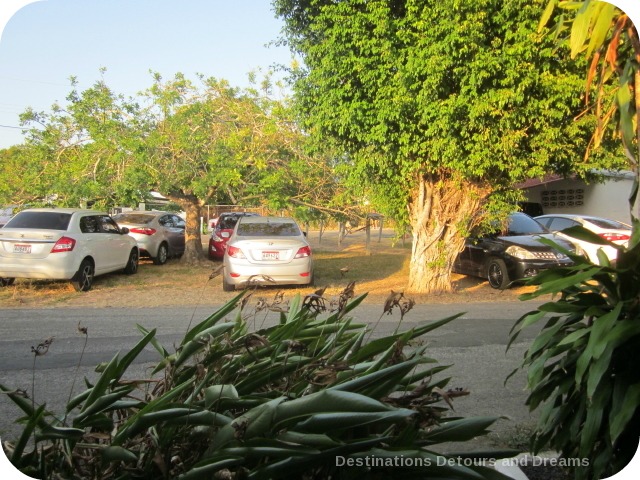
Tradition
All that occurs throughout Carnaval is a tradition. One of my favourite parts of the festival focused on traditional dress. Shortly after 6:00 pm on the final evening, people in various forms of traditional dress, including beautiful and elaborately embroidered polleras, marched and danced around the square, accompanied, of course, by a band. We were leaving town early in the morning the day after Carnaval and therefore did not take in the late evening festivities of the last night. I was told afterward that the queens wore polleras for that.
∼
Carnaval was a fascinating festive feast for the senses. Prior to it starting, I worried we might find the noise and crowds too much. We heard music from the nearest cabaret and fireworks most of the night Friday before Carnaval. But after that evening, the cabaret nearest us operated only from about 3:30 pm to 6:30 pm and was quiet at night. Although people played loud music during the day and early evening, in the later evening and early hours of the morning they were at the square partying. We were far enough away from that to not be disturbed by the noise (except for occasional fireworks).
With over 4,000 people descending on a town of 2,000, I’d read the strain on power and water systems could cause outages. We did experience a six hour power outage one day. And, except for a few short bursts, we were mostly without water the last two days of Carnaval. We had extra drinking water and generally managed through that time, but it was inconvenient. I’d also been warned of the potential for theft. Fortunately, nothing like that happened to us. We were careful to keep electronics out of sight and locked up or with us. We were also thankful we had good neighbours. With the festive atmosphere, the visiting, and people on the streets more, we actually met a few more neighbours during Carnaval.
When we’d picked the timing for our Panama trip we hadn’t realized it bumped into Carnaval. We had the choice to leave before it started or stay a few more days and experience the celebrations. Not having experienced any kind of Latin Carnaval before, we decided to stay. Am I glad we made that choice? Absolutely. Would I attend Carnaval again? Probably not. I enjoyed seeing it once and it is a wonderful cultural tradition, but it is not my tradition. It is not my family gathering to celebrate. On the other hand, I’ve lived long enough to never say never.
Have you attended a Panamanian Carnaval or carnival celebrations elsewhere in the world? What did you think?
Get all the info! Destinations Detours and Dreams monthly e-newsletter contains behind the scenes information, sneak peeks ahead, travel story recaps and more. SIGN UP HERE

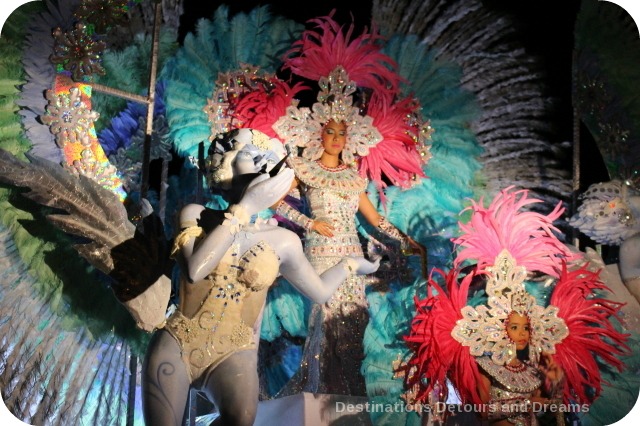

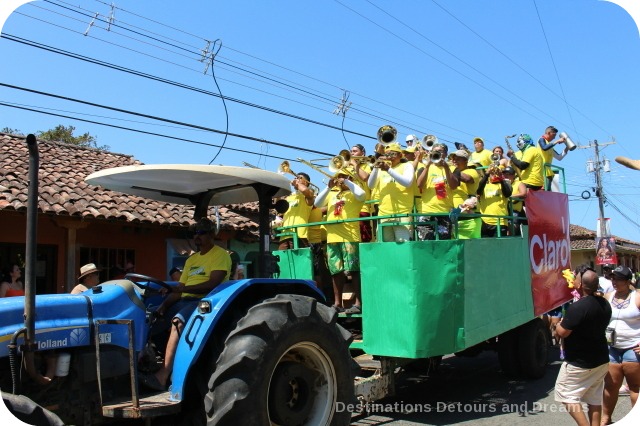
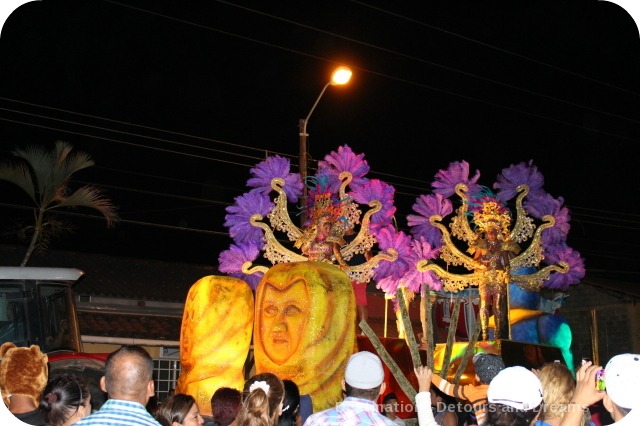
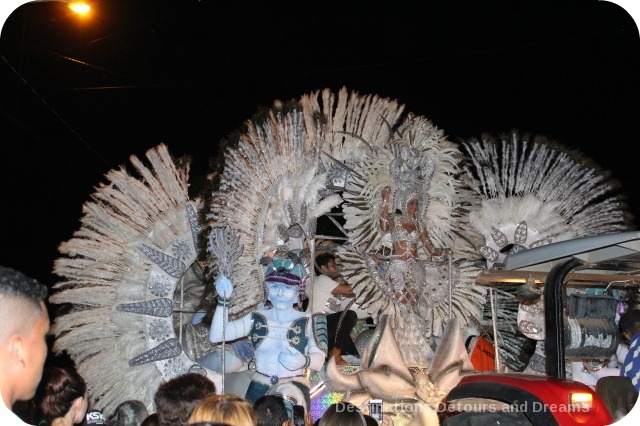
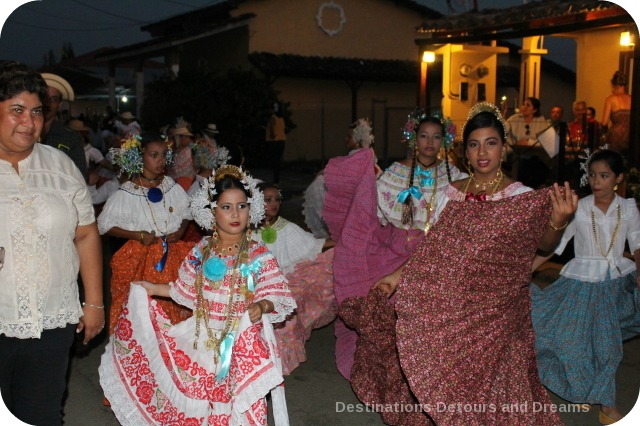
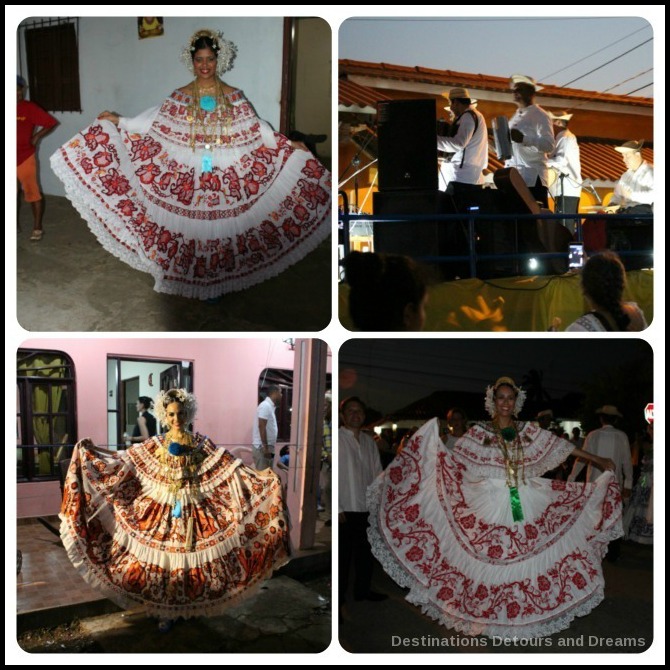
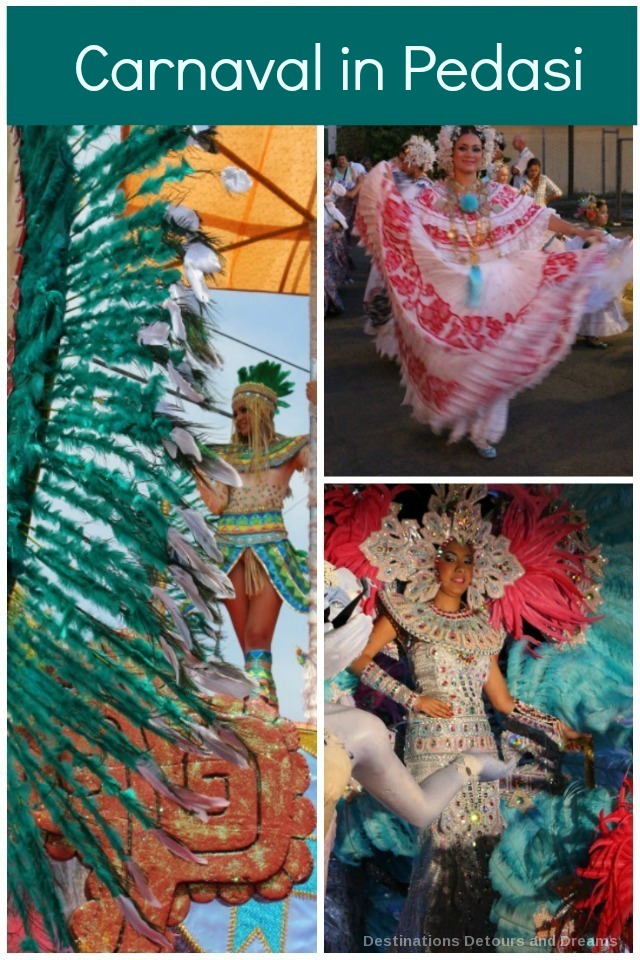
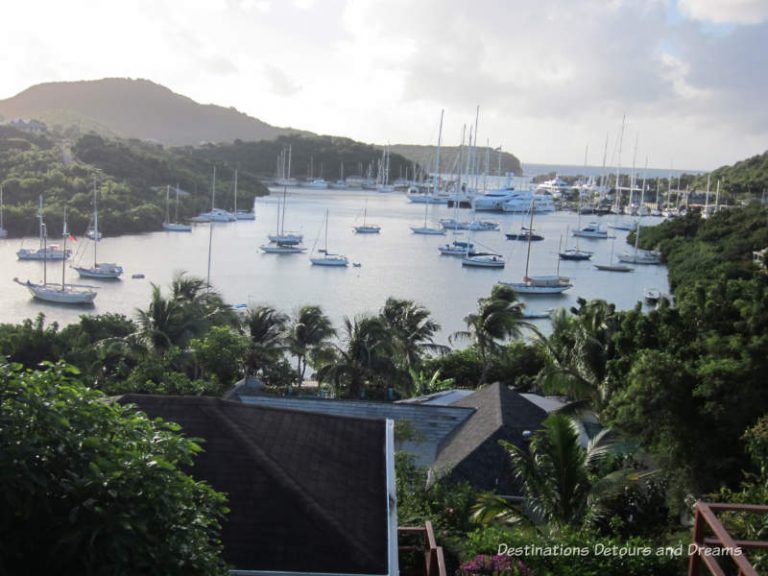
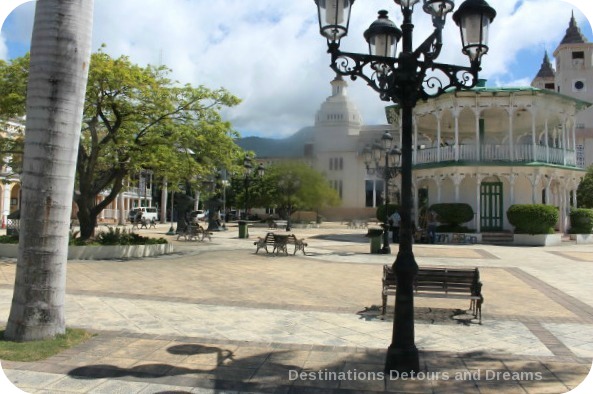
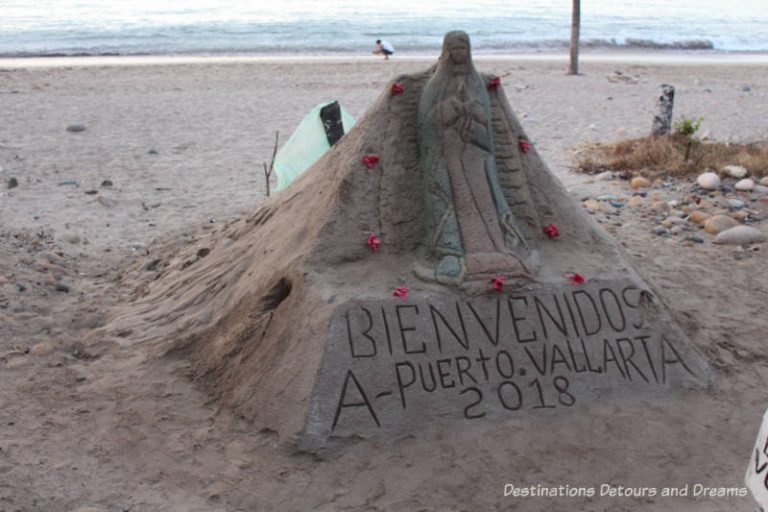
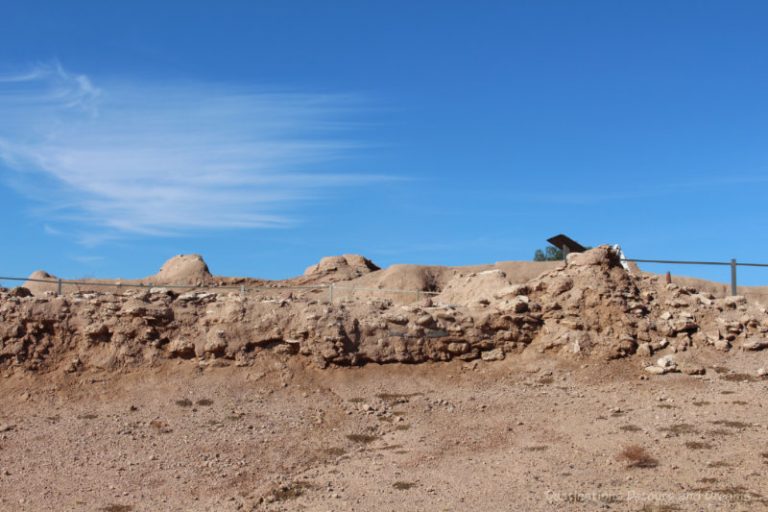
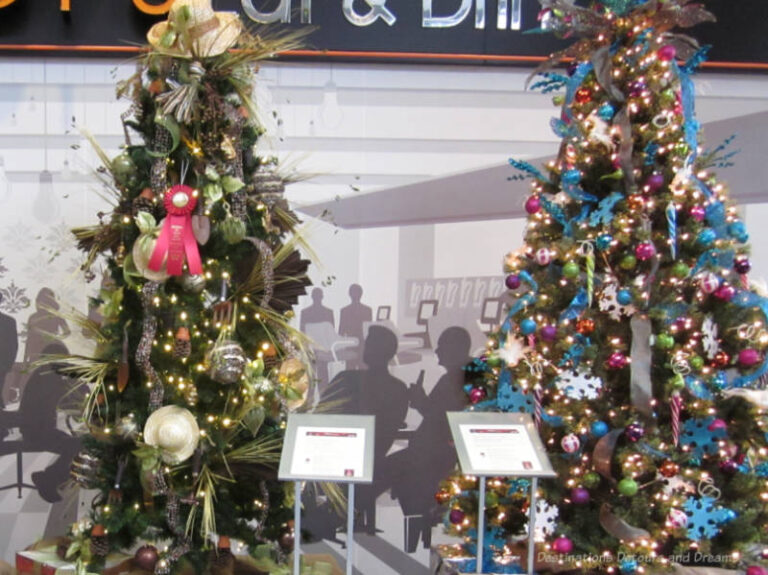
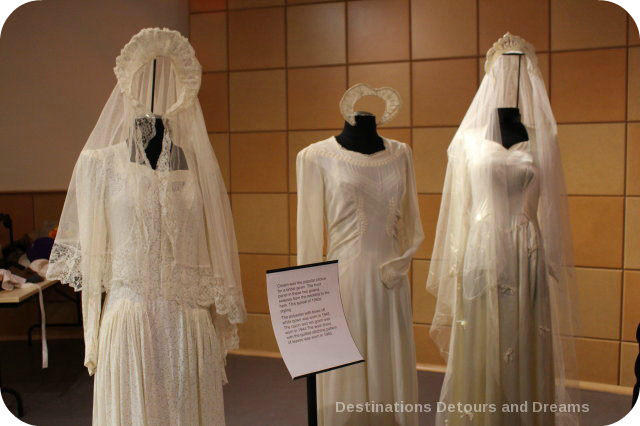
This sounds like an interesting cultural experience. I have never celebrated Carnaval, but we have stumbled upon other large cultural events unexpectedly on our travels. It always gives you another view of a place when you see how the community parties together.
Deb, a festival of any kind certainly does give one another view into a culture. We planned to be in Pedasi for Carnaval, but it is cool when you stumble upon some event unexpectedly.
It sounds and looks like (thanks for the wonderful photo experience) like a wonderful cultural experience. In my husband and my travels to many other countries, there is always raised alarm about potential theft. But I find, it can happen anywhere.
Sounds like a worthwhile stay and your decision to be there to experience all this will be one to always remember. Thanks Donna.
Pat, in some ways it is good to be warned about possible theft and safety issues so you remember to take precautions, but it can also cause overreaction and scare you off. As you’ve said, theft can happen anywhere.
Hi, Donna. We did attend Carnaval in the Bahamas and quite enjoyed it. Although I am liking crowded situations less and less as the years go by. The overflowing garbage concerns me. Standards are sure different than what we are used to in Canada, eh?
Doreen, I too like crowds less and less but there is a sense of excitement at Carnaval that comes with being in the crowd. The garbage was disgusting, but there were also people cleaning it up a couple times a day.
As if your own people, Canadaians and Gringos, don’t leave DISGUSTING garbage in your own nest!
Yes, sadly you can find people leaving garbage all over the world, particularly at events with large crowds. I don’t like finding all that garbage anywhere. Some organizers and some sites have better facilities than other for controlling and allowing for disposal of garbage. I was glad to see people cleaning up Carnaval debris a couple times during the day.
The day carnaval looks fun! I imagine lots of colours, music, laughter and food!
I enjoy reading about your travel experiences. You describe them with such a passion and love for people and their cultures.
Thanks Phoenicia for your kind words.
Wow, Carnaval seems like West Side Story, but with queens. I loved all your vibrant pictures. It definitely looked like a fantastic spectacle. I understand the sentiment of being glad you did it, but not wanting to do it again. It sounds fun, but exhausting.
Erica, I like your comparison to West Side Story, although Carnaval is a little more spectacular and fun. It can be exhausting, but we didn’t stay every night into the wee hours like many locals.
Donna, I could just feel the excitement of Carnaval through this post – the pictures, the write-up – it’s very much like you take us along and I love when travel writers do that.
The costumes were amazing – just think back to when all that was sewn and embroidered by hand – what talent.
I was a little put-off by the garbage left laying around – hard to believe people would just drop their garbage on the ground when done.
Thanks for taking this armchair traveler along.
Thanks Lenie. The costumes were amazing – so elaborate. There were people cleaning up the garbage at points in the day but it was surprising to see how much was just dropped on the street. There were some garbage bins in the square but they filled up and overflowed quickly.
The carnival in Pedasi looks like a fun experience, Donna. Bet you enjoyed it.
Catarina, I’m glad we got to experience Carnaval – it was quite something to see.
What fun! I experienced my first (and only so far) Carnival in a small town in Germany. I was quite bewildered by a lot of went on, but was with a group of German friends who spoke fluent English. They filled me in throughout the events. It’s such great fun to see a cultural event like this and learn about the people and the coming together of families and traditions. Love the pictures.
Rose Mary, each country seems to have its own twist on Carnival, something that brings it own culture into the festivities. I’m sure your German experience was great fun.
This looks like great fun and what an experience for your winter away! It looks fairly elaborate for a local event.
Jacquie, Carnaval is a big deal and a long-standing tradition in Panama, and that is especially so in the Azuero Peninsula.
There are many carnivals in the Philippines, some tamer than others. But, you are right, the Hispanic traditions make the catholic rites more colorful and bombastic. I am glad you enjoyed it and I understand why you may not go back to that particular carnival. Perhaps you can go to a wilder one!
Carol, you’re too funny. This was about as wild as we get! You’re right about the traditions making the rites more colourful.
The Pedasi carnival looked like a lot of fun and even though I’m not a crowd person, the music the costumes and the celebration of a different culture would have captured my attention, although like you … not to stay and party on for the longer term.
Johanna, it was fun and interesting to see even if you’re not a crowd person.
The Panamanians love their festivals and Carnaval has to top the list! Loved seeing the polleras in your photos (we saw a pollera festival in Las Tablas when we were in Panama) because I think they’re some of the most beautiful traditional dresses in the world. Last year we were in Curacao and I remember the first floats throwing out earplugs for the music that accompanied many of the floats. Every now and then I really miss the fireworks that Central Americans use to accompany all of their celebrations and your post about Carnaval brought back some great memories. Anita
Anita, I too think the polleras are the prettiest dresses I’ve seen. The earplugs are an interesting idea. We liked the Latin music we heard, but we could have used the ear plugs when the cabaret was blasting out techno music. I’m glad this brought back some fond memories.
I guess the difference between Carnaval in small town Panama and a small-town fair in North America, is closing at 4 a.m. instead of maybe 10 p.m. Looks like fun.
Ken, the evening was barely starting at 10 p.m.
Hi Donna, this sounds like one heck of a street party. Just imagine how crazy carnavale in a city the size of Rio would get. Think it’s great you decided to stay on and experience it. Wonderful attitude..never say never. That’s what makes life interesting.
Susan, we’re glad we stayed to see Carnaval. Definitely one heck of a street party.
Looks like a crazy, fun time, Donna. The Portuguese celebrate Carnaval as well. There were no festivities right where I was staying, but I did attend a parade in a near-by town. That was fun. I was told that the parade was quite political, and there were floats carrying caricatures of politicians, but I didn’t hear any fiery political speeches, but that could have happened in the evening. There were also lots of colorful floats, including a couple where the females were only wearing body paint. It was a lot of fun, and I’m sure that people partied well into the night.
Nancie, it’s interesting to read what different traditions places have with regard to Carnival. I’ve heard of a couple of other places with a political slant. Partying late into the night seems to be a common denominator though.
What fun, I’m not sure I would make to midnight but the parades look so lively and I’m sure the entertainment colorful and lively. I’ve only been to a few Carnivals in the US and I’m sure pales in comparison.
Noel, we rested and took an early evening nap so we got get back up at midnight and see the parade and festivities.
One hears about the carnival in Rio or Nice, but I had never heard of it in Panama and for it to last 4 days is quite something. Not sure I’d be thrilled to hear fireworks by the 3rd night, but I guess it’s all part of the fun. Nice overview of what the event is like, particularly the costumes. I bet you’re glad you were there for a very unique experience.
Janice, it was definitely a unique experience.
We have never done Carnival either, and this small town version looks like big fun. Not sure I would be up for four days straight of it though.
We didn’t take in everything for the four days and spent a fair bit of time at home as well. But there was no printed schedule. People just seemed to know what would happen when. Years of tradition I guess. So we’d venture out at different times to see what was going on. We learned to watch for an increase in the number of people passing down our street on the way to the centre of town as a sign something was about to happen.
Wow. Looks like you had a great ending to a great winter break. Thanks for sharing your experience, Donna. I have enjoyed the posts.
Sabrina, it was certainly a lively ending to our time in Pedasi. We actually wished we’d stayed a few days longer to see the town return to normal.
It all looks amazing Donna! The dresses are just beautiful and the floats look surprisingly large for such a rural area but now that I think about it even here in Maui people really get into building floats for parades. Sounds like a wonderful time to be there.
Marquita, a lot of work went into those floats.
One of the things I love about reading travel blogs is discovering places I’ve never heard of. Pedasi is one of them. Latin America knows how to celebrate and they do it long and hard. The good news is being there for Carnival was a unique experience and the floats look wonderful. The bad news is days of inconvenience and a bit of chaos, but I bet, overall, it was worth it.
Billie, yes overall the experience was worth it.
I’ve always wanted to go to a Carnaval celebration somewhere, and I’m sure I will one of these days. The costumes, the floats, and all of the music sounds so exciting. I’m sure after a few drinks, the crowds wouldn’t get to me nearly as much 😉
Jeri, it would interesting to experience carnival somewhere else now and compare, but I’m not sure I could handle crowds larger than Pedasi.
Donna, You captured the magic of the festival in these photos! Loved the scenes of both the partying and the need for cleanup (sadly, it looks much the same here in Washington State after big festivals and celebrations as well.) Such fun, it looks like you had!!!
I’m glad you feel I’m managed to capture some of the magic. There is always cleanup after a party, isn’t there?
What a thorough “reporting” on the carnival. Enjoyed this post and could relate to it as we lived in Nicaragua for six years and any kind of festival or carnival was always a really “big deal” with everyone really going all out. Fun fun fun!
I’m glad you enjoyed the post and could relate. I experienced two festivals in Panama and they do go all out for the parties. Thanks for stopping by.
I like that you are describing this festival in a smaller town. Most people assume the best carnivals and parades happen in the big cities. I often find it is the places off the beaten path, that truly know how to celebrate.
thanks for sharing this with us.
William, you’re right – small towns often know how to celebrate. So many of the people in town get involved to make a festival happen.
Belive it or not, I’ve never been in a carnival before, Donna. This seems to be a very interesting cultural experience, especially since it takes place in a small town. I’d like to see one with my own eyes someday.
Anda, this was my first carnival. It was an interesting cultural experience, especially given it was in a small town. It would be interesting to experience carnival in a different place and see how customs compare.
I enjoyed reading about your Carnival experience! I love the colorful dresses. I was in Brazil, north of Rio during Carnival once, but did not attend. I do remember the loud music though until early hours of the morning.
I live in Louisiana, so Mardi Gras is popular here. I went to a Courir de Mardi Gras in a small community this year. This is a French Cajun tradition. It is very different than the typical Mardi Gras. It involves traveling thru the countryside begging for ingredients from neighbors to make a gumbo at the end of the day. They have a parade when they are done with the Courir part of it. It’s very different. Thank you for sharing!
Thanks for stopping by. Courir de Mardi Gras sounds like a fun time. It’s interesting to see how each place puts its unique stamp on carnival traditions.
The festival looked amazing. Everyone in the pictures looked like they were having a fantastic time.
Jason, there was a definite jovial and festive mood those four days.
We celebrated Carnival when we lived in Panama City; I was surprised to learn that Panama hosts the second largest carnival in the world (after Rio), and Las Tablas is the zaniest one of all. As an adjunct to your great story, I wrote a story about How to Celebrate Carnival in Panama that you might enjoy reading: http://www.aswesawit.com/celebrate-panama-carnival/. Those culecos were a necessary part of the celebration, that’s for sure.
#TheWeeklyPostcard
Linda, thanks for directing me to your post. I enjoyed reading it, especially the history information – I didn’t know that. The culecos and the water guns were definitely welcome in the heat and crowds.